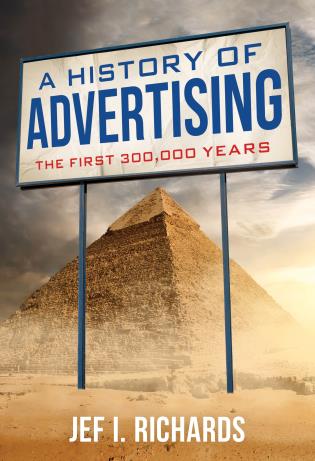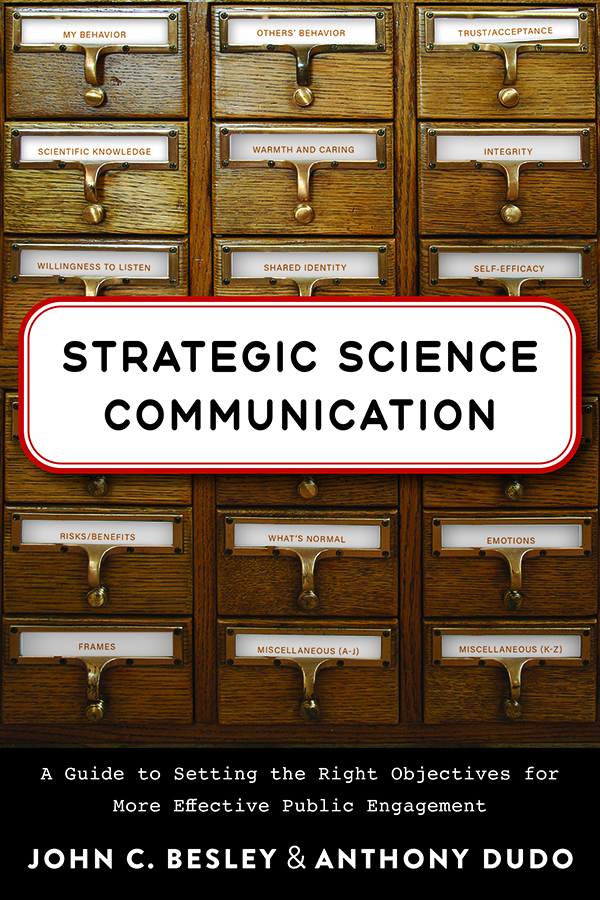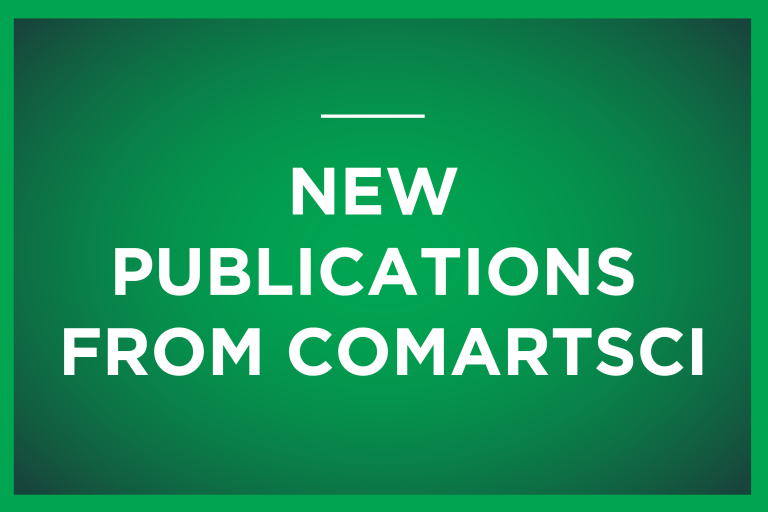What do professors do in their free time? During the 2021-2022 academic year, four ComArtSci faculty members published new works on topics reflecting their passions and areas of expertise, serving up both entertainment and education to readers.
Below, each author and book are introduced with a brief description of their work.
A History of Advertising: The First 300,000 Years
Jef I. Richards

When asked what inspired this book, Professor Jef Richards cited how the history of advertising is often not included in the discussion of the field itself. “A History of Advertising” aims to fill this educational gap and provide a foundation for those in the industry to understand how the work they do now is built on the work that those have done previously.
“I hope people will start to see some of the ways advertising has contributed to the development of our present society, such as the roles it played in major wars,” said Richards.
“I am not trained as a historian, but I am trained as a lawyer, which demands a type of historical research. So, I approached it much as I would research the history of a legal problem. I spent a few years digging and looking for clues. As much as possible, I sought out photos and drawings that could substantiate and illustrate historical facts.”
Art as Social Practice: Technologies for Change
xtine burrough and Judy Walgren

“Art as Social Practice” is a collection of case studies edited by Professor of Practice Judy Walgren and Professor xtine burrough (University of Texas at Dallas). The book considers an array of stories about artists who strive to make social change through community-engaged work. It includes pieces like “One Breath Poem: A Telematic Revolution” from Labsynthe — xtine burrough, Sabrina Starnaman, Letícia Ferreira, Fiona Haborak, Cynthia O’Neill — which seeks to raise awareness of police brutality, specifically in the case of George Floyd, through multiple examples of what one breath can feel like.
“Through the exercise, you get a very powerful, embodied experience of how long one breath lasts and how it feels as it is leaving your body," said Walgren.
The twenty-five reflective case studies shine light on how artists can engage with communities and create meaningful exchanges through new technologies and digital spaces.
“I hope readers take away the idea that social practice, or community-engaged work, can be an approach not only used in artistic practices, but also for research, education and so many other areas, as well.”
Introduction to Game Design, Prototyping, and Development: From Concept to Playable Game with Unity and C# (Third Edition)
Jeremy Gibson Bond

The latest edition of Professor of Practice Jeremy Gibson Bond’s top-selling book has now grown to over 1,500 pages of updated information for new game developers. The focus is on three areas: game design theory, rapid iterative prototyping and practical programming.
“As Unity has grown in capability and complexity, so has my book. What started in 2013 as a collection of small tutorials to showcase an emerging game engine now encompasses 28 chapters introducing game design and programming plus five deep tutorials that teach readers everything they need to know to make games in what is now the world’s most popular game engine,” said Bond.
Also included in this latest edition is access to a website full of Coding Challenges to help readers transition from the tutorials in the book to their own bespoke projects, as well as an online tool to help readers check their code for typos and other mistakes. The book is used as a textbook here at MSU and around the world.
Strategic Science Communication: A Guide to Setting the Right Objectives for More Effective Public Engagement
John C. Besley and Anthony Dudo

“Strategic Science Communication” by Brandt Professor of Public Relations John C. Besley and his colleague Anthony Dudo at the University of Texas at Austin aims to help scientists make more evidence-based communication choices.
Besley hopes that scientists and professionals who help scientists communicate will use the ideas in the book to improve their effectiveness.
“For me, this means helping science communicators identify concrete, audience-specific goals and then prioritize communication objectives—specific beliefs, feelings, and frames—that might help them achieve those objectives,” said Besley.
“From there, I want people to think carefully about whether their tactical choices have the potential to affect the outcomes they’ve prioritized. Writing the book highlighted how many gaps remain in social scientific literature when it comes to testing communication theory in real-world contexts.”
By Allie Horning
